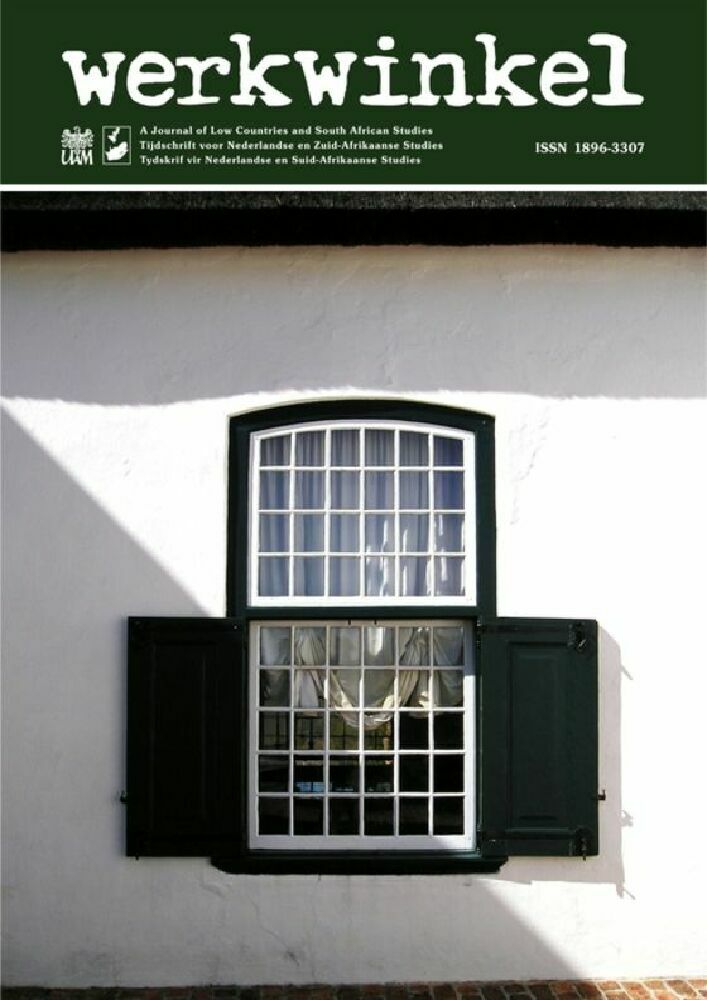Abstract
In 1949, the Dutch publishing house A.J.G. Strengholt’s Uitgeversmaatschappij N.V. published the novel Dorstig paradijs. Through the eyes of Evelien van Eerdhuysen, the young, Dutch, female protagonist, author Adriaan Hulshoff presented an image of postwar Curaçao. In general, Dutch reviews of Hulshoff’s novel were quite positive and mentioned, for instance, the realistic representation of the island. Reviews published on Curaçao were very negative. At the moment the novel was published, Curaçao was fully in the news, because of the deliberations about the political status of the Dutch islands in the Caribbean. The question can be raised whether the image of Curaçao presented by Hulshoff was widespread in the Netherlands and representative of the way the Dutch looked at their Caribbean colonial possessions. One of the reasons why the book got much attention had to do with the name of the author who was hiding behind the pseudonym Adriaan Hulshoff. Most probably it was the well-known female writer Jo van Ammers-Küller, who after the Second World War, was banned from publishing because of collaborating with the Germans.
References
Bel, Jacqueline. 2015. Bloed en rozen. Geschiedenis van de Nederlandse literatuur 1900-1945. Amsterdam: Uitgeverij Bert Bakker.
Beller, Manfred. 2007. “Perception, Image, Imagology.” Imagology. The Cultural Construction and Literary Representation of National Characters. A Critical Survey. Eds Manfred Beller en Joep Leerssen. Amsterdam-NewYork: Rodopi. 3-16.
Beller, Manfred en Joep Leerssen, eds. 2007. Imagology. The Cultural Construction and Literary Representation of National Characters. A Critical Survey. Amsterdam-New York: Rodopi.
“Boek en Tijdschrif.” 1949. Twentsch dagblad Tubantia. 20 augustus 1949.
“Boekbespreking. Dorstig paradijs.” 1949. De Gooi- en Eemlander. 8 augustus 1949.
“De boekenplank. Dorstig paradijs.” 1949. Het nieuwsblad voor Sumatra. 23 augustus 1949.
Dennert, Henk. 1952. “Henk Dennert geeft zijn mening over een niet-Antilliaans boek over een Antilliaan.” Amigoe di Curaçao. 29 juli 1952.
Groeneveld, Gerard. 2001. Zwaard van de geest. Het bruine boek in Nederland 1921-1945. Nijmegen: Uitgeverij Vantilt.
Hoetink, Harmannus. 1958. Het patroon van de oude Curaçaose samenleving. Assen: Van Gorcum.
Hulshoff, Adriaan. 1949. Dorstig paradijs. Een Curaçaose roman. Amsterdam: A.J.G. Strengholt’s Uitgeversmaatschappij N.V.
Kempen, Michiel van en Wim Rutgers, eds. 2005. Noordoostpassanten. 400 Jaar Nederlandse verhaalkunst over Suriname, de Nederlandse Antillen en Aruba. Amsterdam/Antwerpen: Uitgeverij Contact.
“Kunst. Opzienbarende literaire kwestie. Jo van Ammers-Küller in opspraak.” 1949. Leeuwarder Courant. 7 oktober 1949.
Leerssen, Joep. 2007. “Imagology: History and Method.” Imagology. The Cultural Construction and Literary Representation of National Characters. A Critical Survey. Eds Manfred Beller en Joep Leerssen. Amsterdam-NewYork: Rodopi. 17-31.
Mathijsen, Alma. z.d. “Een eenzijdig verhaal – deel 1 en deel 2.”. 1 juli 2019. <http://literatuurmuseum.nl/artikelen/een-eenzijdig-verhaal>.
Meijer, Maaike. 1993. “16 juni 1937: Annie Romein-Verschoor krijgt de dr. Wijnaendts Francken-prijs voor Vrouwenspiegel. De schrijvende vrouw en de kritiek.” Nederlandse literatuur, een geschiedenis. Ed. M.A. Schenkeveld-Van der Dussen. Groningen: Martinus Nijhoff Uitgevers. 682-689.
Oostindie, Gert. 1998. Het paradijs overzee. De ‘Nederlandse’ Caraïben en Nederland. Amsterdam: Uitgeverij Bert Bakker.
Ross, Leo. 1999. “Jo van Ammers-Küller in Dubrovnik. 1933: Een congres van de internationale PEN-club in Dubrovnik.” Literatuur 16: 225-232.
Rutgers, Wim. 1986. Dubbeltje lezen, stuivertje schrijven. Over Nederlandstalige Caraïbische literatuur. Oranjestad: Charuba-Den Haag: Leopold.
Rutgers, Wim. 1996. Beneden en boven de wind. Literatuur van de Nederlandse Antillen en Aruba. Amsterdam: De Bezige Bij
Rutgers, Wim. 2007. De brug van Paramaribo naar Willemstad. Nederlands-Caribische en Caribisch-Nederlandse literatuur (1945-2005). Curaçao: Fundashon pa Planifikashon di Idioma (FPI) en Universiteit van de Nederlandse Antillen (UNA).
Smit, C.G.M. en W.F. Heuvel. 1976. Autonoom. Nederlandstalige literatuur op de Antillen. 2e druk. Rotterdam: Flamboyant/P.
Venema, Adriaan. 1988. Schrijvers, uitgevers en hun collaboratie. Deel 1. Het systeem. Amsterdam: Uitgeverij De Arbeiderspers.
Venema, Adriaan. 1989. Schrijvers, uitgevers en hun collaboratie. Deel 2. De harde kern. Amsterdam: Uitgeverij De Arbeiderspers.
Venema, Adriaan. 1990. Schrijvers, uitgevers en hun collaboratie. Deel 3A. De kleine collaboratie. Amsterdam: Uitgeverij De Arbeiderspers.
Venema, Adriaan. 1992. Schrijvers, uitgevers en hun collaboratie. Deel 4. Uitgevers en boekhandelaren. Amsterdam: Uitgeverij De Arbeiderspers.
“Wie is onze Adriaan? Het vermoeden is op tante Jo, de uitgeverij zwijgt evenwel.” 1949. Amigoe di Curaçao. 28 september 1949.
Wit, Hendrik de. 1949. “Een Curaçaose roman van verwerpelijke strekking.” Algemeen Handelsblad. 20 augustus 1949.
License
Copyright (c) 2019 Willem Bant

This work is licensed under a Creative Commons Attribution-NonCommercial-NoDerivatives 4.0 International License.

